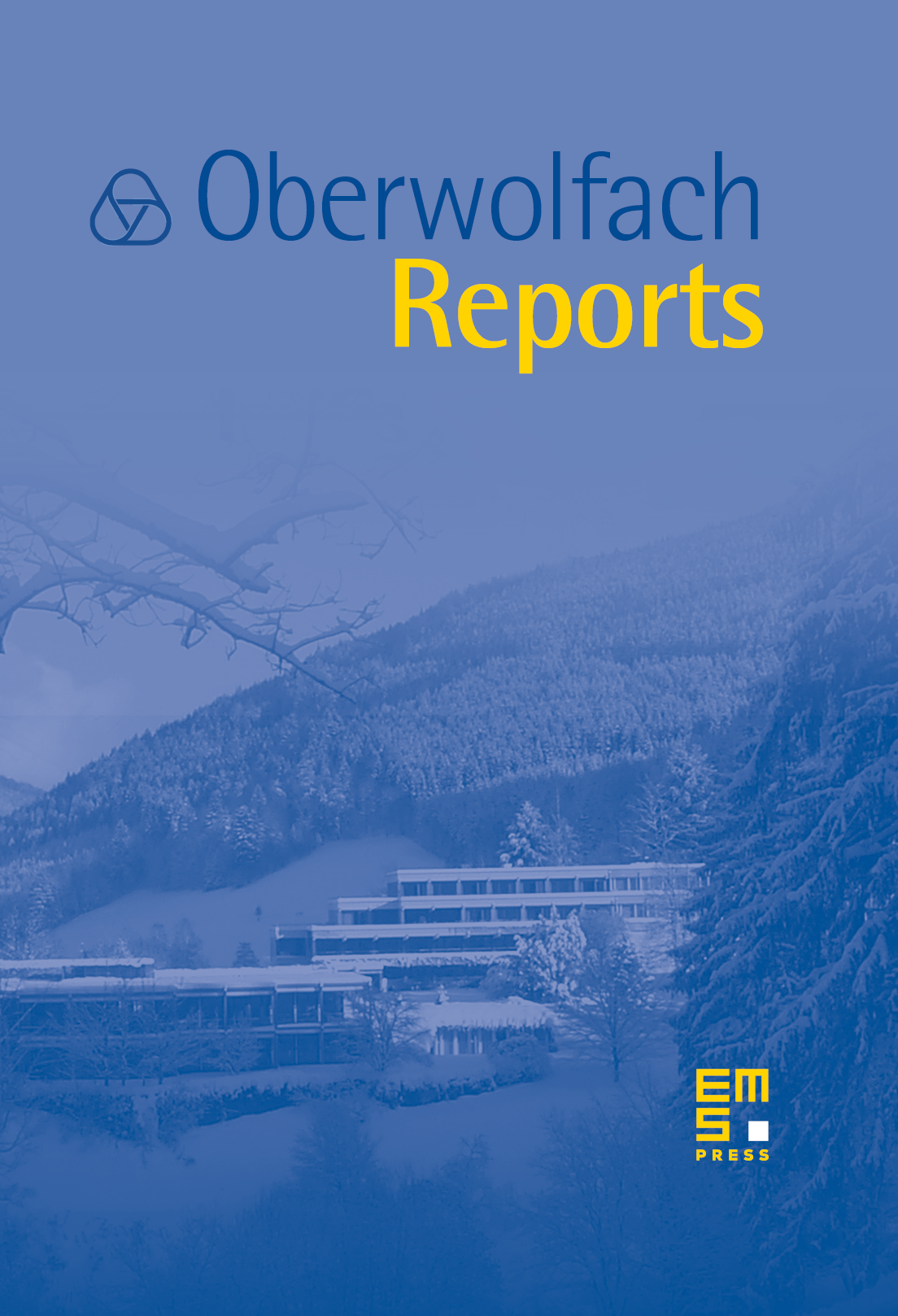Mini-Workshop: Analysis and Computation of Microstructures in Finite Plasticity
Klaus Hackl
Ruhr-Universität Bochum, GermanySergio Conti
Universität Bonn, GermanyMichael Ortiz
California Institute of Technology, Pasadena, United States

Abstract
The miniworkshop was attended by fourteen participants of whom twelve gave presentations. Additionally Kolumban Hutter from the University of Darmstadt, then at the research institute as a research-in-pairs fellow, agreed to give a talk on “Granular flows and avalanches”. There was one discussion session chaired by Stefan Müller, during which the most important problems of the field which have to be addressed in the near future were identified. The individual talks lasted for one and a half hours in the average and were interlaced with lively discussions.
The main theme in the workshop was the variational formulation of crystal plasticity, in a rate-independent setting. For small time-intervals, this leads to a single variational problem, which is often referred to as the “first time step”. One substantial difficulty arises from the fact that the resulting functional is not lower semicontinuous, leading to non-existence of minimizers. The corresponding theory of relaxation has some analogies to the one developed in nonlinear elasticity. A second issue is the formulation of a theory that goes beyond small time intervals. In a framework where time is discretized, the functional at each time step depends on the minimizer at the previous one (assuming it exists). This leads to a sequence of coupled variational problems, and even the precise definition of the time-continuous limit is not yet completely understood.
The subjects treated ranged from the mathematical formulation of the variational problems and existence results for those, to analytical and numerical methods to determine their relaxation, and applications to various problems in mechanics and physics. Research in progress and sometimes of speculative nature was presented rather then established results. Specifically, the main questions treated were the following:
-
Relaxation. How does one determine the relaxation of the single variational problem corresponding to the first time step? This links to the issue of determining, exactly or approximately, the quasiconvex envelope of an effective energy density. The talks addressed analytical approaches as well as numerical procedures and results, mainly on the calculation of laminated microstructures. A particularly complex open problem is that of physical softening, which in contrast to geometrical softening causes loss of coercivity of the potentials.
-
Time-continuous problem. How can time-continuous evolution of microstructures and pattern-formation be described in a proper mathematical context? What is the appropriate concept of relaxation, and how can the relaxation be determined explicitly? What is a good material model for testing such formulations?
-
Singular perturbations. What are the physically correct nonlocal extensions of the models, i.e., which of the various regularizing terms used are physically motivated? This class includes most singular perturbations, such as, e.g., surface-energy terms. In turn, how do these regularizations modify the structure of the model, and do they permit to explain quantitatively the experimentally observed microstructures, such as the so-called dislocation-walls?
-
Global vs. local optimization. Do there exist more efficient and robust numerical algorithms than the global optimization procedures which currently have to be carried out? Is it possible to consider a physically-motivated local optimization procedure?
-
Experiment. Is it possible to devise experimental tests for the theories developed?
During the miniworkshop progress could be made concerning some of these questions and interesting ideas where developed for the rest of them.
Cite this article
Klaus Hackl, Sergio Conti, Michael Ortiz, Mini-Workshop: Analysis and Computation of Microstructures in Finite Plasticity. Oberwolfach Rep. 2 (2005), no. 4, pp. 2979–3018
DOI 10.4171/OWR/2005/52